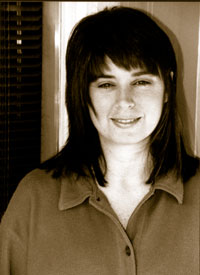
The country music landscape continues to rotate like the sleeve on a kaleidoscope with each twist yielding unexpected consequences. Through it all artists, big and small, continue to find ways to establish and nourish their careers. And those journeys can take various shape and form based upon the goals of everyone involved.
Indie and small label closures feel like they have been accelerating (i.e. Golden, Treehouse, Universal South, Lyric Street), but the shuttering has not slowed the march of new artists. Instead of waiting for label deals, many of these newcomers arrive self-contained as the CEOs of their own corporation, a simplified, but all inclusive 360 deal.
MusicRow spoke with Jerry Duncan, Owner of Jerry Duncan Promotions and Nancy Tunick, who co-owns GrassRoots Promotions with Teresa Johnston to find out what trends they are seeing and their expectations for the latter half of 2010.
“There is so much good indie music,” says Tunick. “It has raised the playing field to a new level. The environment is now crowded and competitive, but also exceptional as far as content for programmers is concerned. I see a huge difference in the number of artists on their own producing amazing music as compared to 3 or 5 years ago. Artists with their own virtual label get absolute control of branding themselves to consumers. The smaller label situation can also be positive, but fewer exist because they are based upon economies of scale that are similar to majors. Running a label with multiple artists requires significant staff and therefore revenue to support that overhead. Alternatively, being self-funded or having an investor means you don’t have to sell as much product or create as much revenue. You are your own industry and can lean on a variety of revenue streams. It’s easier to build ROI (return on investment) if you are the CEO of you, then you have the ultimate 360 deal.”
“I don’t believe the label closings are indicative of a trend,” argues Duncan. “Looking back over the years there has always been a high turnover of indie labels. Ultimately 90-95% close. Actually, now is a really good time for indies because there are new opportunities. For example, the Internet, which allows all artists to easily sell music online and offers so many ways for fans to discover that new music. But to compete requires having a good plan. Look at some of the success stories: Average Joe has sold over a quarter million albums on Colt Ford and sold a lot on Brantley Gilbert already. Zac Brown broke through on an indie label. Broken Bow is a major force as a label now and they started as an independent. Jaron & the Long Road To Love started as an indie before getting picked up by a major. True, the odds are against you (as they always are) with independents, and breaking an artist takes more money and time than newcomers generally realize. You have to be in it for the long haul.”
According to Tunick there are two basic pathways. “The self-contained artist may not require the same level of success as those at a larger label because they have different ROI needs,” she says. “If an act is getting booking, merch, publishing and other revenue streams and not limited to just having a Top 10 single, then success can be defined much more broadly than just having a Top 10 record at radio. There are artists I consider ‘Country’s Middle Class’ that aren’t making millions, but are doing what they love, and presenting the gift of their music to others. They don’t have to deliver pizza or wait tables. So that is one scale for success. The Taylor Swift type of major label success is much rarer when you are on your own label mostly because you don’t have major market leverage. Success in the larger label arena is mostly about having a major market radio hit. Generally, when it does happen to an indie it is because the content is reactive.
“The indie example of the year was Jaron,” Tunick continues, “and that was a super reactive record. We worked with him while he was independent before he went to Big Machine. Each time that record was played a hundred people called. Reactive songs are in a different category than music generally. If an artist comes to me and says their goal is a major market top ten hit then my answer is, ‘Find a song that is going to be reactive. Not just excellent—reactive.'”
Duncan notes country’s march in the direction of becoming a singles based format and sees it also empowering smaller artists. “People download the songs they like and don’t have to commit to a full album,” says Duncan. “That is advantageous for independents, who no longer have to live or die on their ability to get on the shelves at Wal-Mart, a feat that was always difficult. For consumers, it also means that instead of waiting to hear several songs on the radio before taking the leap to buy an entire album—a process that can take 12 months or more, they can buy the track they already love. And if a consumer likes one song and buys it then certainly they are a candidate for buying the entire album down the road. Downloads have changed industry economics and consumer behavior.”
Tunick realizes that various segments of the country industry have yet to recognize and perhaps fully embrace the rising middle class. “Some may be slow catching up to the idea that indie artists on their own labels or smaller labels can be true marketplace competitors,” she says. “Everything is not gauged on whether there is a Top 10 major market hit. These artists have national fan bases and are supporting themselves and other people via their touring. Some existing organizations are designed to only support what they have known in the past, which is big stars, and aren’t used to dealing with the recently introduced artist middle class. I’m hoping those parts of our industry will catch up.”

About the Author
David M. Ross has been covering Nashville's music industry for over 25 years. dross@musicrow.comView Author Profile




